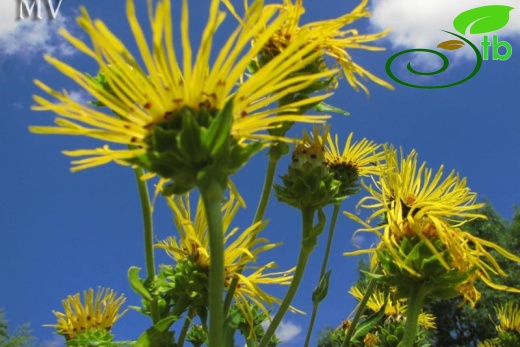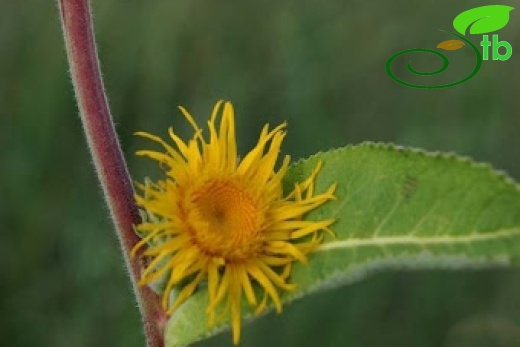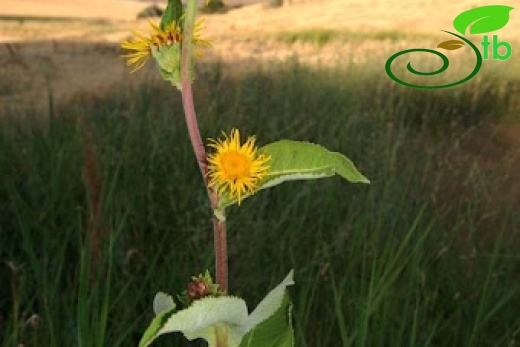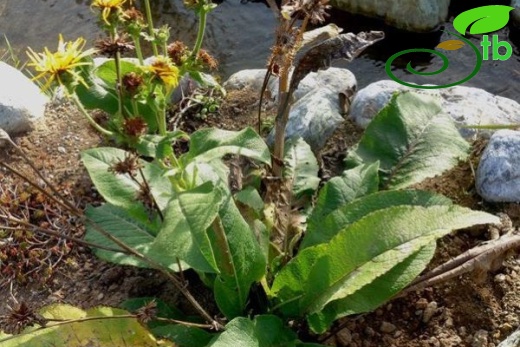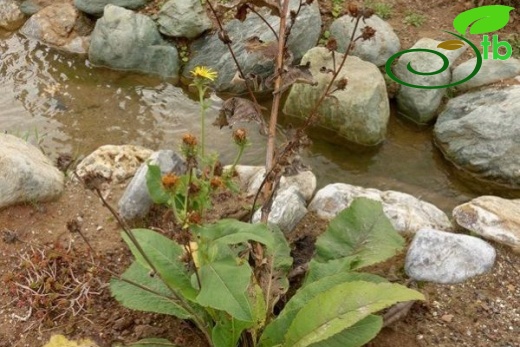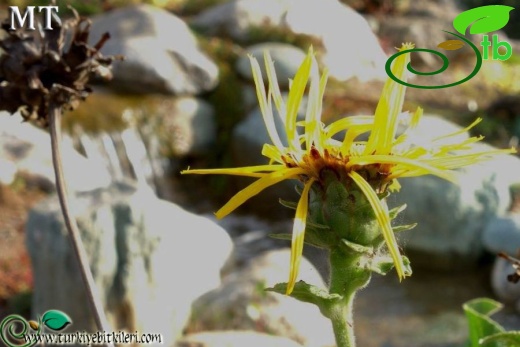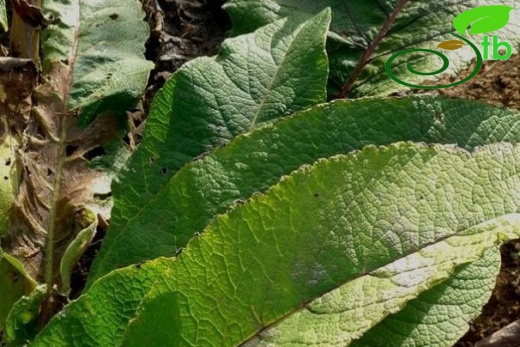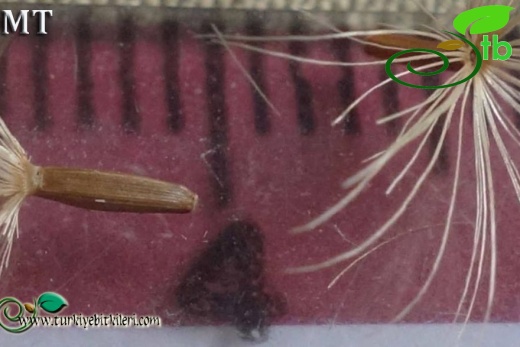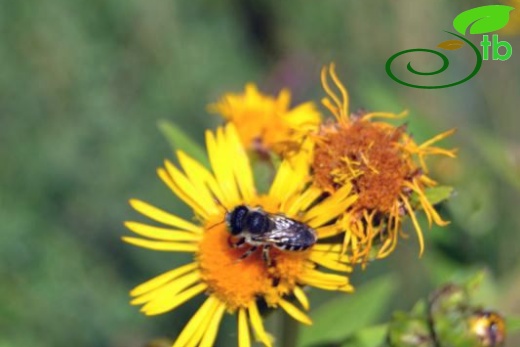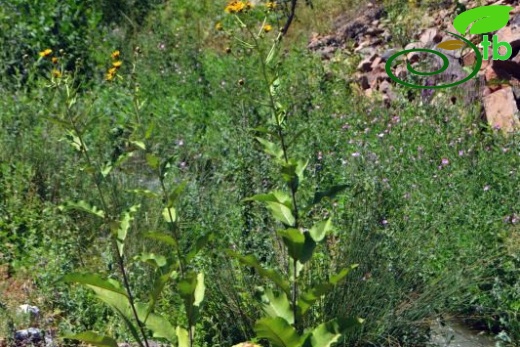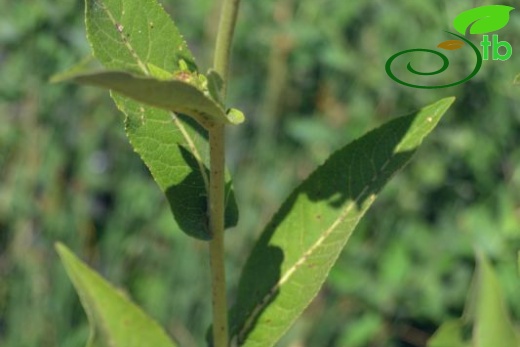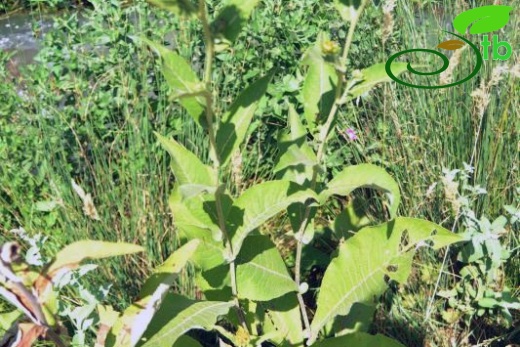Inula helenium
Inula helenium
Subsp orygalis: Koca andızotu; Subsp pseudohelenium: Andızotu; Subsp turcoracemosa: Dere andızotu; Subsp vanensis: Van andızotu
Perennial herb with thick aromatic rhizomes. Stems ± erect, 1-2 m, pubescent or densely spreading-pilose, branched above. Basal leaves ovate-elliptic, 40-50 cm x 12-20 cm, acute, gradually attenuate at base, margin coarsely serrate, papillose to adpressed pilose above, pubescent or subtomentose beneath; upper leaves smaller, ovate, sessile, semi-amplexicaul, rounded and subcordate at base. Capitula radiate, large, usually 5-20 in lax corymbs or narrow racemes. Involucre 2,5-4,5 cm broad; phyllaries imbricate or subequal, 6-7-seriate; outer ones lanceolate, 2,5-4,5 x 0,75-1,25 cm, foliaceous and longer than inner ones or ovate, 0,75-1,5 x 0,5-1 cm, shorter than inner ones, herbaceous, densely pubescent or tomentose sometimes with brown margins; inner ones acuminate, 1,5 x 0,15 cm, membranous. Ray flowers 75-100, ligules 10-30 mm. Disc flowers 8,5-10,5 cm. Achenes 5-angular, 2,75-3,5 mm, glabrous or minutely pubescent at apex. Pappus brownish, 6-10 mm, hairs 40-60, barbellate, connate at base. Fl. 7-9. Stream or lakesides, often in forests or scrub, 1000-2560 m.
Although the species is probably of Euro-Siberian origin, two of the four Turkish subspecies are now confined to mesophytic habitats in the Irano-Turanian region.
1. Outer phyllaries foliaceous, longer than inner ones; involucre 3,5-5 cm broad; ligules 25-30 mm subsp. orgyalis
1. Outer phyllaries scarcely foliaceous, shorter than inner ones; involucre 2-3 cm broad; ligules less than 20 mm
2. Ligules few , 3-6 mm, scarcely longer than involucre .............................subsp. vanensis
2. Ligules numerous, 10-15 mm, obviously longer than involucre
3. Capitula borne on short side branches of inflorescence of racemose or spicate form ......subsp. turcoracemosa
3. Capitula borne on long side branches of inflorescence of corymbose form ..subsp. pseudohelenium
The species extends into Iran and Caucasia.


